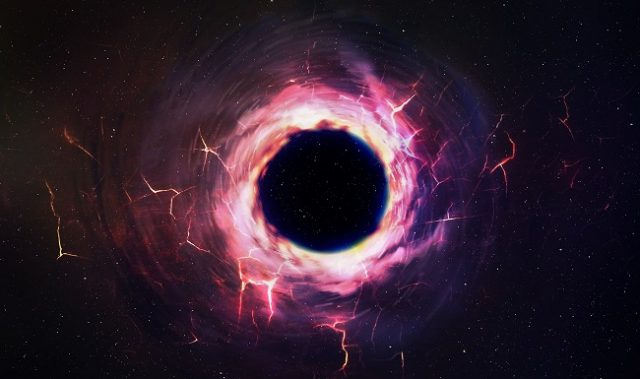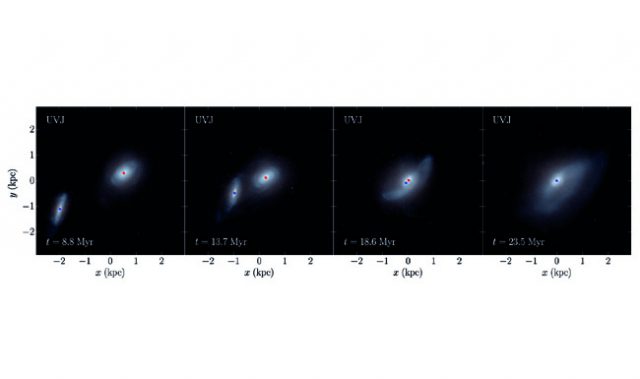
AsianScientist (Jul. 15, 2016) – Radio astronomers have used a radio telescope network the size of the Earth to zoom in on a unique phenomenon in a distant galaxy: a supermassive black hole shooting out a jet after devouring a star. The observations reveal a compact and surprisingly slowly moving source of radio waves, with details published in Monthly Notices of the Royal Astronomical Society.
These observations would not have been possible without the full power of the many radio telescopes of different sizes which together make up the European VLBI Network (EVN), said Professor An Tao from the Shanghai Astronomical Observatory in China. EVN is a wide-ranging radio telescope array that includes the 25-meter radio telescope in Sheshan in Shanghai.
The international team, led by research engineer Dr. Yang Jun of the Onsala Space Observatory in Sweden, studied the newborn jet in a source known as Swift J1644+57 with the EVN. The source was traced to a distant galaxy, so far away that its light took around 3.9 billion years to reach Earth. Yang and his colleagues used a network of detectors separated by thousands of kilometers and combined them into a single observatory to make extremely high-precision measurements of the jet from Swift J1644+57.
When a star moves close to a supermassive black hole, it can be violently disrupted. About half of the gas in the star is drawn towards the black hole, forming a disk around it. During this process, large amounts of gravitational energy are converted into electromagnetic radiation, creating a bright source visible at many different wavelengths.
Interestingly, some of the star’s material can be ejected in extremely narrow beams of particles at speeds approaching the speed of light. These so-called ‘relativistic jets’ produce strong emission at radio wavelengths.
These results give important insights into what happens when a star is destroyed by a supermassive black hole, but also how newly-launched jets behave in a pristine environment.
“While the largest radio telescopes in the network contribute to the great sensitivity, the larger field of view provided by telescopes like the 25-meter radio telescopes in Sheshan and Nanshan in China and in Onsala in Sweden played a crucial role in the investigation, allowing us to simultaneously observe Swift J1644+57 and a faint reference source,” said An.
The article can be found at: Yang et al. (2016) No Apparent Superluminal Motion in the First-known Jetted Tidal Disruption Event Swift J1644+5734.
———
Source: Royal Astronomical Society; Photo: ESA/S. Komossa/Beabudai Design.
Disclaimer: This article does not necessarily reflect the views of AsianScientist or its staff.












